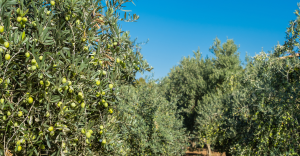In a scenario marked by high production costs, commodity price instability, and rising interest rates, financial planning has become indispensable for the sustainability of rural businesses. Among the most adopted commercialization methods in recent years, barter operations have gained prominence as a strategic alternative to secure inputs, lock in prices, and organize cash flow.
Commonly used by grain producers—such as soybeans, corn, and cotton—barter is gaining traction in Brazil’s harvest. But how exactly does this operation work, and when is it truly worthwhile? That’s what we’ll explain in this content. Enjoy your reading!
What is a Barter Operation and How Does It Work in Agriculture?
Barter, in English, means “exchange.” In agribusiness, this operation essentially involves exchanging agricultural inputs for a portion of future production. Instead of paying upfront or financing inputs with interest, the farmer enters into a contract committing to deliver a predetermined quantity of their harvest in exchange for fertilizers, seeds, pesticides, machinery, or services.
This exchange can occur in two ways:
- Direct barter: Negotiation is conducted directly between the farmer and the input supplier.
- Triangular barter: Involves a trading company or originator, which intermediates the operation and often offers more attractive commercial conditions (such as extended payment terms or locked-in input prices).
This type of operation allows quick access to inputs even during periods of low liquidity, while also protecting the farmer from price volatility. It is common for barter contracts to include hedge clauses, using the stock exchange (B3) or international markets (CME) to secure a minimum price for the commodity.
The Advantages of Barter for Farmers
The main advantage of barter operations is risk management. By securing the exchange in advance, the farmer can:
- Guarantee production costs even before planting;
- Protect against currency fluctuations (especially for imported inputs);
- Organize cash flow throughout the crop cycle;
- Avoid debt with traditional financial institutions;
- Reduce financial costs, as many operations do not involve interest.
Additionally, with the help of trading companies or integrator firms, farmers can access broader markets, improve logistics for distribution, and even participate in loyalty programs with benefits for future input purchases.
How to Structure a Beneficial Barter Operation
Despite its advantages, barter requires attention to embedded costs and exchange parity. Farmers should calculate:
- The total value of the inputs obtained;
- The equivalent amount in bags or units of the promised commodity;
- The reference price used in the contract;
- Any intermediation, storage, or freight fees.
According to David Telio, Director of New Financial Structures at Terra Magna consultancy, one of the key points is analyzing the exchange ratio. This means considering the price of inputs—such as seeds, fertilizers, and agrochemicals—and converting the package value into the quantity of commodities based on current prices. This exercise allows farmers to clearly visualize their profit margins.
Another essential aspect is legal security. Barter operations can involve complex contracts, such as physical or financial Rural Product Notes (CPR), resolutory clauses, and real guarantees. Therefore, it is recommended to seek legal support to ensure that the terms are clear and that the farmer is protected in case of unforeseen events, losses, or defaults.
Practical Tip: Use barter simulators or control spreadsheets to compare the operation with cash or credit purchases.
Cash Sales: When Are They Still More Advantageous?
Even with the rise of barter, cash sales remain attractive in certain contexts, especially when:
- Commodity prices are high, and the farmer can secure a good margin;
- There is availability of own capital to purchase inputs;
- The farmer seeks autonomy and flexibility to negotiate at different times.
Cash sales also favor direct discounts, bonuses, and premiums, especially when the product is of superior quality or has certifications that add value, such as traceable grains or sustainability seals.
Future Contracts and Hedging: Protection Against the Unpredictable
Barter can be linked to forward or futures contracts, which guarantee a fixed (or minimum) price for the future delivery of the commodity. This protection is achieved through the stock exchange or directly with a trading company.
In this context, hedging becomes a strategic ally: it protects the farmer against price drops and helps estimate crop profitability with greater precision. The intelligent use of derivatives reduces the risk of losses even with fluctuations in the dollar or international markets.

Technology and Management in Commercial Decision-Making
Digital tools are great allies for those who want to compare barter options with other modalities. Specialized platforms already offer:
- Exchange and parity simulators;
- Real-time monitoring of commodity prices;
- Currency fluctuation alerts;
- Comparisons between futures contracts.
Additionally, agricultural management software allows for organizing costs, controlling inventories, and evaluating the financial impact of each commercialization method. Data analysis also helps farmers make decisions based on evidence rather than intuition.
So, Is Barter a Good Deal? It Depends on the Strategy.
Barter operations can be extremely advantageous—if well-structured. They offer liquidity, planning, and price protection. However, they require farmers to have knowledge, conduct detailed comparisons, and pay close attention to contracts.
According to expert David Telio, barter, originally designed as a risk mitigation tool, remains relevant. “If the input price is locked in and the farmer feels secure with this lock, they can speculate on their margin. With a bit more governance and risk management, they can avoid problems that could impact the entire supply chain. Still, there is a greater degree of risk, especially related to weather, which today represents an additional challenge we are addressing,” says Telio.
Before making a decision, it is worth comparing barter with cash sales, traditional financing, and futures contracts. The ideal choice depends on the farm’s profile, the crop being planted, market conditions, and the farmer’s goals.
With proper planning and information, barter can be more than just an exchange: it can be a powerful strategy for commercial management, margin protection, and ensuring the next harvest.





